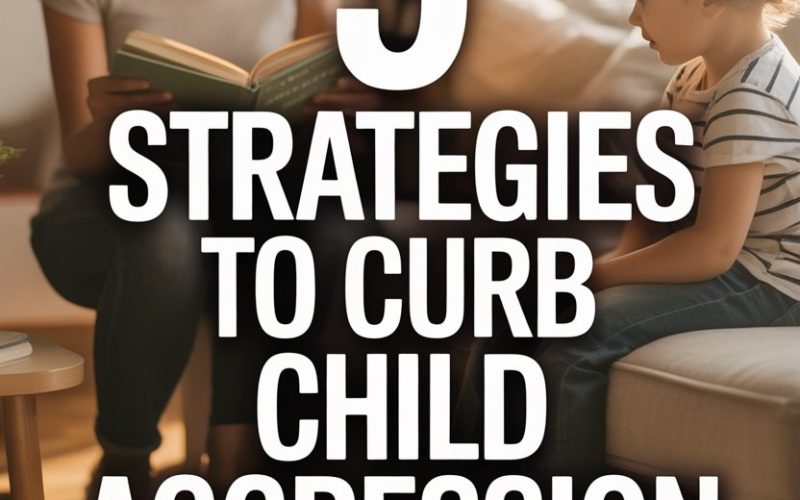Anyone who’s ever received a LEGO missile to the forehead knows that children don’t always channel their feelings with gentle finesse. Even the most angelic child may, at some point, have a Hulk moment.
Busy parents, you’re not doomed to play referee forever. If you’ve ever silently wondered if your kid might be a secret WWE recruit, you’re in the right place.
Let’s get straight to it—five practical, evidence-backed strategies to help turn those “he hit me!” moments into peace treaties (or at least slightly less dramatic reenactments of World War III).
1. Spot the Triggers Before the Eruption
You know that look—the one just before your child’s face crumples and the storm clouds gather. Sheer tiredness, hunger, a sibling’s accidental elbow, or even that bit of broccoli touching the beans can spark an outburst.
Not all aggression is created equal, and it rarely comes out of nowhere. Research from the Child Mind Institute stresses the importance of spotting patterns.
Keep a mental note (or, for the hyper-organised, a quick note in your phone) of what sets your child off. Does the after-school hour make everyone cranky? Is there a particular playmate who flips their switch?
Catching these patterns gives you a jumpstart. If meltdowns tend to happen when your little one is hungry, a strategically timed snack might be your best weapon.
Armed with this knowledge, you’ll feel less like you’re dealing with random acts of chaos and more like you’re anticipating the plot twist in your favourite drama.
2. Give Big Feelings Names
Nothing inspires fury quite like being misunderstood—just ask any toddler trying to explain why the blue cup is the only acceptable cup.
Young children often lash out because feelings are overwhelming and language is, at best, a work in progress.
Help your child by being their emotional translator. When you see fists ball or a sibling’s favourite toy about to be launched, try, “It looks like you’re really angry that your turn ended.”
This isn’t just fluffy parenting advice; using this “emotion coaching” approach, as recommended by psychologist John Gottman, can make a world of difference.
Once a child knows what they’re feeling, it’s easier to talk about it—rather than, say, taking out their frustration on the dog, their sibling, or the unsuspecting potted plant.
Over time, you’ll notice your child using words more often than flying objects. Well, most of the time.
3. Model the Behaviour You Want
Children watch us more than they listen to us. That’s both comforting and utterly terrifying.
If you want your child to handle anger with something other than a well-placed kick, show them what calm looks like—even when your inner monologue is less “zen master” and more “someone hand me a stress ball.”
When tempers flare (and they will), narrate your process: “I’m really angry right now. I’m going to take a few deep breaths before I say anything.”
The American Academy of Pediatrics recommends this sort of modelling, as it gives kids the tools to follow suit, rather than feeling left to their own devices.
Nobody’s perfect—if you do lose it and raise your voice, take the chance to apologise. You’ll teach your child that everyone makes mistakes, and it’s how we handle them that counts.
Also, apologies go a long way in family diplomacy.
4. Teach Calm-Down Techniques That Actually Work
It’s tempting to say, “Take a deep breath!” when your child is red-faced and vibrating with fury. Sometimes it works. Sometimes it feels like telling a tornado to chill out.
The trick is to practice these skills when things aren’t on fire.
Try a few simple strategies: blowing bubbles (who can stay mad while making the biggest bubble?), squeezing a cushion, stomping out anger with “angry feet,” or using a comforting sensory tool, like a squishy ball.
Many schools are turning to zones of regulation, which use colour-coded cues to help kids identify and manage their feelings.
Make these tricks part of everyday life. Have a “calm corner” with a few favourites, and allow your child to choose which one feels right.
Remember, what works for one may not work for another—your sensory-seeking child might love to jump, while your bookworm may prefer to snuggle up quietly.
5. Reinforce the Good, Ignore the Show
When aggression takes centre stage, it’s easy to focus all attention on the negative behaviour. The real magic happens when you catch your child being gentle or using words.
Praise those moments with as much fanfare as you can muster: “You told your brother you were mad instead of hitting—amazing!”
Try to be specific and genuine (kids are scary-good at detecting fake enthusiasm). This positive attention makes it more likely your child will repeat the behaviour.
On the flip side, don’t offer an audience to aggressive outbursts. Safety comes first—if your child is lashing out, step in and remove them from the situation.
Once everyone’s safe, stay calm and keep your words brief: “We don’t hit. When you’re calm, we’ll talk.” Over time, your child learns which behaviours get your attention (and which don’t).
When to Worry and Where to Turn
Even with the best strategies, some children struggle more than others to manage aggression. If your child’s outbursts are frequent, seem out of proportion, or put themselves or others at risk, it’s worth reaching out for support.
Talk to your GP, paediatrician, or a child psychologist. There’s no shame in asking for help—raising kids is not a solo sport.
Sometimes aggression is triggered by underlying issues like anxiety, neurodiversity, or trauma. Getting the right support early can make a world of difference for your child and your whole family.
Peace, One Day (Or Hour) at a Time
Aggression in children can test even the most patient parent. The good news? Every small effort counts.
Spotting triggers, giving feelings names, modelling calm, practising cool-downs, and celebrating peaceful moments will, over time, transform your home’s WWE vibe into something a bit more like a meditation retreat. Or at least a mildly chaotic yoga class.
No one expects you, or your child, to get it right every time. Progress over perfection, always.
And if all else fails, there’s always chocolate (for you, not the kids).





